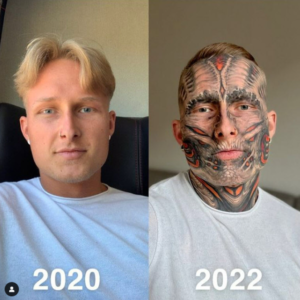In the heart of industrial America, where innovation was once heralded as a symbol of progress, a quiet catastrophe was brewing. For decades, a single company, DuPont, operated under a veil of secrecy while distributing a chemical compound so pervasive it ultimately tainted the blood of nearly every human on Earth. This is the story of perfluorooctanoic acid — or PFOA — a toxic compound that slipped into our bodies through cookware, carpets, clothing, and even rainwater.
The Birth of a “Miracle” Chemical
In the mid-20th century, chemical companies were in a race to develop materials that could reshape the future. DuPont, one of the world’s largest chemical corporations, struck gold with Teflon — a slick, non-stick coating found in pots and pans worldwide. To make Teflon, DuPont used PFOA, also known by its commercial name, C8.
Initially, the potential of Teflon seemed limitless. It was heat-resistant, waterproof, and durable — ideal for consumer goods, industrial applications, and even military equipment. What remained in the shadows, however, was the darker side of this innovation.
A Dangerous Secret
By the 1970s, DuPont scientists already knew something was wrong. Internal documents, later revealed through lawsuits, showed the company was aware that PFOA was toxic and persistent. It didn’t break down in the environment or the human body. Instead, it accumulated.
In one internal study, DuPont found that factory workers exposed to PFOA had abnormal liver functions. Female employees who worked with the chemical gave birth to children with facial deformities. In spite of these findings, DuPont continued to produce and release the chemical into the environment, largely unchecked.
The surrounding communities of Parkersburg, West Virginia — home to a major DuPont manufacturing plant — were the first victims. Waste from the plant seeped into the Ohio River, contaminating drinking water for tens of thousands. But this local disaster was just the beginning of a global crisis.
The Cover-Up
DuPont didn’t inform the Environmental Protection Agency (EPA) of the hazards posed by PFOA for decades, a direct violation of federal law. It wasn’t until the late 1990s, when a local farmer named Wilbur Tennant noticed that his cattle were mysteriously dying, that the cover-up began to unravel.
Tennant suspected something in the water from a nearby DuPont landfill. His lawyer, Rob Bilott, uncovered a trove of internal documents that laid bare a history of deception. DuPont had known for over 40 years that PFOA was harmful — not just to workers, but to everyone exposed through air, water, and consumer products.
Planetary Contamination
Once released, PFOA doesn’t go away. It circulates through water systems, air currents, and animal migration paths. Scientists now estimate that PFOA is present in the blood of 99% of all humans, as well as in polar bears in the Arctic and dolphins in the Indian Ocean.
This widespread contamination isn’t limited to DuPont alone. After the dangers became public, the chemical industry rebranded PFOA-like compounds as “GenX” chemicals, claiming they were safer. But recent studies suggest these replacements may be just as persistent and toxic.
The Human Toll
PFOA exposure is linked to a range of health issues: thyroid disease, testicular and kidney cancers, high cholesterol, pregnancy-induced hypertension, and immune system dysfunctions. In 2012, a scientific panel concluded a “probable link” between PFOA and several serious diseases based on studies of thousands of affected people near DuPont’s West Virginia plant.
Despite mounting evidence, regulatory action was slow. In 2005, the EPA fined DuPont $16.5 million for failing to disclose PFOA’s risks — a record at the time, but a pittance compared to the billions in profit the company made from Teflon.
Legal Reckoning
Rob Bilott’s class-action lawsuit resulted in a $671 million settlement for 3,500 people in 2017. However, the legal battles are ongoing. As more people become aware of their exposure, new lawsuits emerge. DuPont spun off its chemical division into a new company, Chemours, in what many critics view as a way to avoid long-term liability.
In 2019, the film Dark Waters, based on Bilott’s 20-year fight, brought renewed attention to the scandal. Still, most consumers remain unaware that products they use daily — stain-resistant carpets, water-repellent jackets, fast-food wrappers — may contain variations of the same forever chemicals.
Toward Accountability
Public pressure is beginning to have an effect. Several states have adopted stricter limits on PFOA in drinking water than the federal government, which only recently issued non-binding advisories. President Biden’s administration has promised tougher regulation on PFAS chemicals, but enforcement is uneven.
Companies are now required to phase out certain PFAS, but thousands of variants remain unregulated. Meanwhile, scientists are racing to develop technologies to remove PFAS from water and soil — a monumental challenge given their durability.
A Cautionary Tale
The story of PFOA is not just about one company. It is a lesson in corporate greed, regulatory failure, and scientific obfuscation. It demonstrates how a compound designed for convenience can lead to global contamination when profit is prioritized over safety.
We live with the consequences today — in our bloodstreams, our ecosystems, and our children. What remains to be seen is whether this moment will spur true accountability, or whether the legacy of PFOA will be just another footnote in the annals of industrial hubris.







